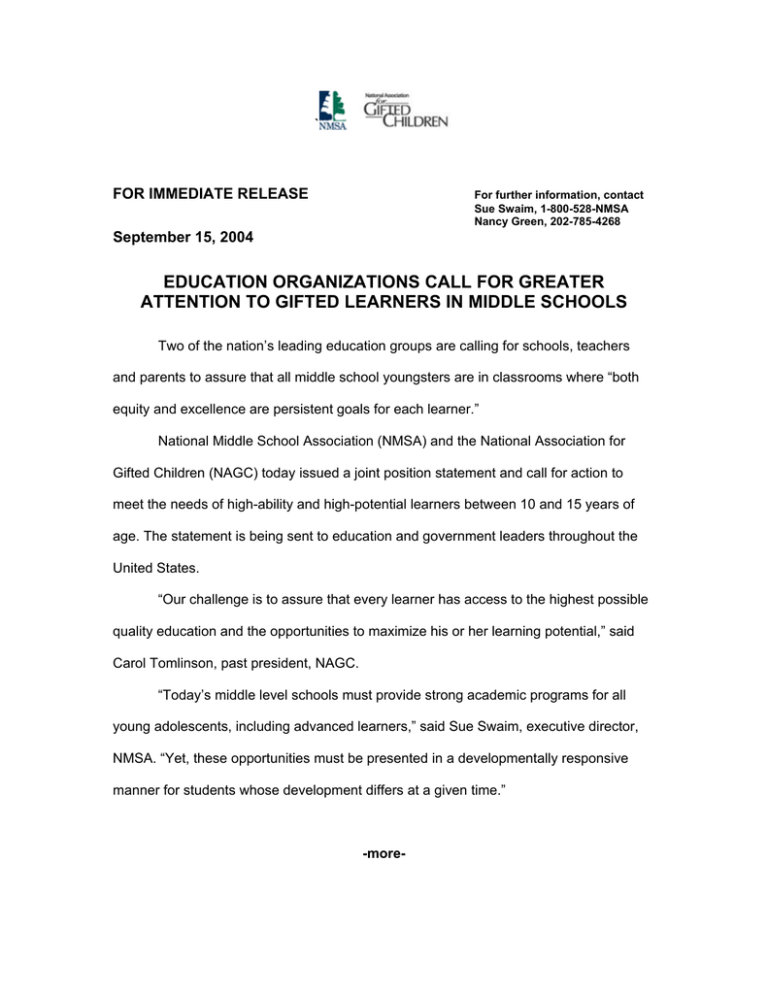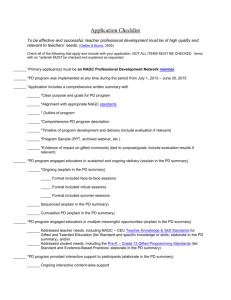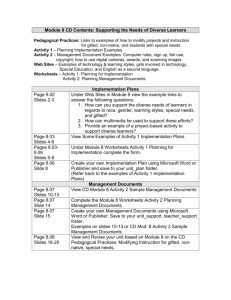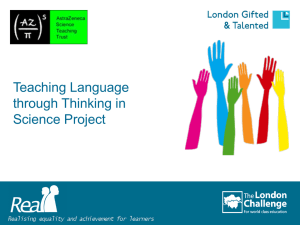EDUCATION ORGANIZATIONS CALL FOR GREATER `
advertisement

` FOR IMMEDIATE RELEASE For further information, contact Sue Swaim, 1-800-528-NMSA Nancy Green, 202-785-4268 September 15, 2004 EDUCATION ORGANIZATIONS CALL FOR GREATER ATTENTION TO GIFTED LEARNERS IN MIDDLE SCHOOLS Two of the nation’s leading education groups are calling for schools, teachers and parents to assure that all middle school youngsters are in classrooms where “both equity and excellence are persistent goals for each learner.” National Middle School Association (NMSA) and the National Association for Gifted Children (NAGC) today issued a joint position statement and call for action to meet the needs of high-ability and high-potential learners between 10 and 15 years of age. The statement is being sent to education and government leaders throughout the United States. “Our challenge is to assure that every learner has access to the highest possible quality education and the opportunities to maximize his or her learning potential,” said Carol Tomlinson, past president, NAGC. “Today’s middle level schools must provide strong academic programs for all young adolescents, including advanced learners,” said Sue Swaim, executive director, NMSA. “Yet, these opportunities must be presented in a developmentally responsive manner for students whose development differs at a given time.” -more- Page 2-2-2-2 NMSA and NACG are urging schools to implement appropriate identification, assessment, and curriculum and instruction programs for students with advanced abilities and/or advanced potential. Additionally, schools should build partnerships with all adults key to these students’ development, and focus on the affective development of these youngsters. Finally, the position statement calls for increased pre-service and inservice staff development for middle level teachers dealing with gifted students. The position statement includes a “call to action” to ensure equity and excellence for all learners, including those of advanced performance or potential. It suggests specific steps for district and school leaders; teachers, gifted education specialists and support personnel; and parents to take, including— District and school leaders: ♦ Should provide leadership in creating a school climate that vigorously supports both equity and excellence. ♦ Develop and implement an appropriate and flexible system for identifying high-ability learners from diverse populations. ♦ Use organizational structures such as teaming and advisory programs to ensure that the needs of young adolescents, including high-ability young adolescents, are central in instructional planning. -more- Page 3-3-3-3 Teachers, gifted education specialists, and support personnel: ♦ Meet regularly to discuss the needs of all students, including those with high ability. ♦ Use a variety of developmentally appropriate instructional practices to enable each student to experience a high degree of personal excellence. ♦ Collaborate with colleagues at the elementary and high school levels to ensure a smooth transition as students progress throughout the grades. Parents ♦ Understand and contribute to the district’s plan for identifying and serving high-ability learners. ♦ Help their children take appropriate responsibility for their own learning and develop related skills and attitudes of responsible independence. ♦ Be their children’s best advocate. Copies of the position statement can be found on both associations’ Web sites, www.nmsa.org, or www.nagc.org. NMSA is the nation’s largest professional association focusing specifically on the education of young adolescents (10- to 15-year-olds). Its 31,000 members include middle level teachers, principals, school administrators, parents, and others dealing with this age group. NAGC is a non-profit organization of parents, teachers, educators, community leaders, and other professionals who unite to address the unique needs of all children and youth with demonstrated gifts and talents as well as those who may be able to develop their talent potential with appropriate educational experiences. -30-



